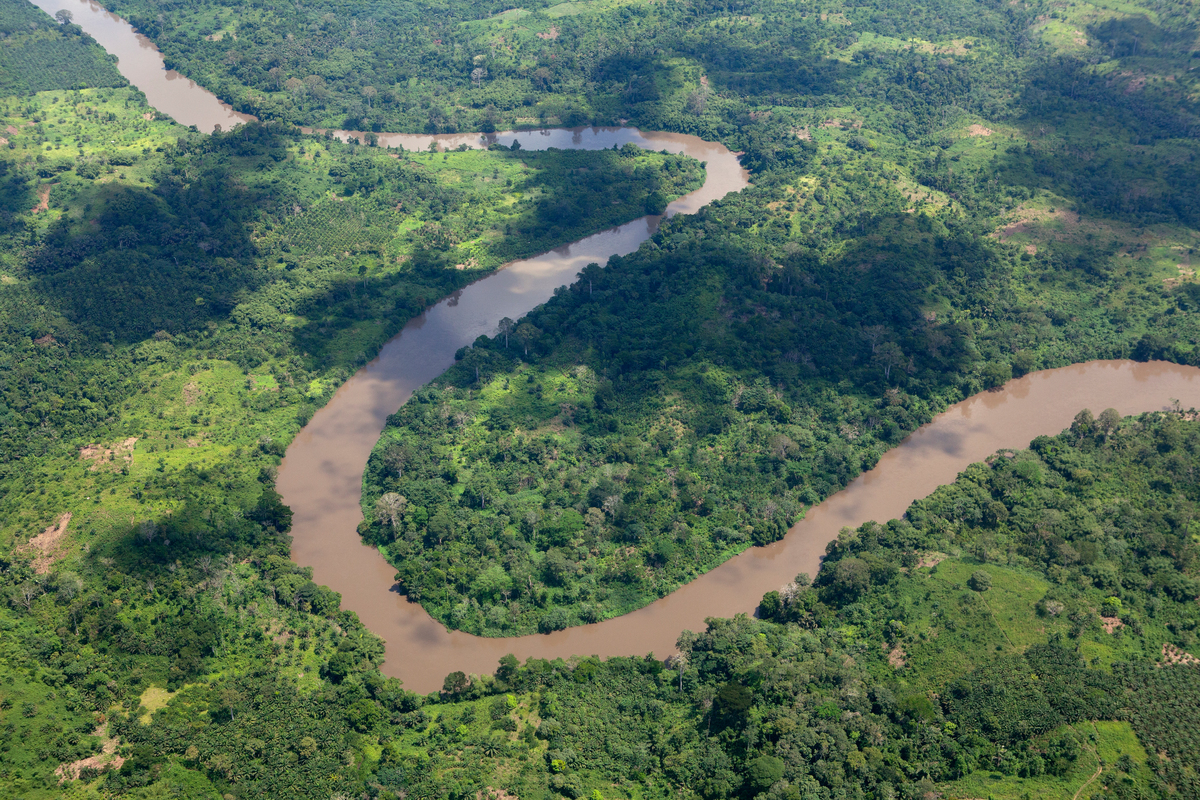
The coastal rainforest of Cameroon. This forest, at the fringe of the Congo Basin, is a biodiversity hotspot, home to endangered species including chimpanzees and forest elephants.
In September 2014, Forest Stewardship Council (FSC) members voted with an overwhelming majority at their General Assembly to protect “the vast majority” of Intact Forest Landscapes (IFLs) in and around FSC certified forest management areas. IFLs are the last remaining forests free from large-scale industrial development – they hold tremendous social, ecological, as well as economic value. FSC is the only global forest certification system to make such a commitment.
The Congo Basin is home to the world’s second-largest rainforest in the world – more than half of which is in the Democratic Republic of the Congo (DRC) and still largely intact. The forest provides food, water, shelter, medicine, spiritual and cultural significance for tens of millions of people, as well as habitat for threatened species such as gorillas, bonobos and forest elephants. The forest region also constitutes the fourth largest carbon reservoir in the world. With such resources it is very much a jewel that should be protected.
But protection is still far off, scientists have calculated that 10% of global degradation of intact forest landscapes takes place in Africa and DRC, the Republic of Congo and Gabon are on the forefront of that degradation. Industrial logging, roadbuilding and other infrastructure, mining and hydrocarbon developments all have devastating impacts. The increased international demand for commodities and natural resources has led to destructive and often illegal industrial logging practices, which is devastating for the rainforest; logging in the region has exacerbated poverty and social conflict, as well as destroying the habitat of critically endangered animals such as the bonobo.
With this context, the FSC’s commitment to protecting IFLs is critical. 60 million people and many wildlife species depend on the Congo Basin forest for their survival.
In recent years, the FSC has extended its reach into the Congo Basin. Great caution must be exercised when extending forest certification to a region where: there is poor governance, human rights abuses in the forest sector are common, forestlands are leased out to large corporates, and local communities have no or few rights over their forests nor do they gain a fair share of the benefits from the forestry sector.
In order that the FSC’s project is a success, not only must there be a ‘high bar’ for IFL protection, but land use plans must involve and obtain the free, prior and informed consent of forest communities living in or adjacent to intact forests, and all permitted low impact activities must directly benefit them. This model could serve to benefit both the people of Congo Basin’s rainforest, as well as its rich biodiversity.
I hope the FSC’s commitment to IFL protection will make a real change in the Congo Basin by supporting real alternatives to the current concession based logging model. As well as the other forest regions that still have IFLs, such as in Canada, Brazil, Russia, PNG and Indonesia.
Irene Wabiwa is the forest campaign leader with Greenpeace Africa.
